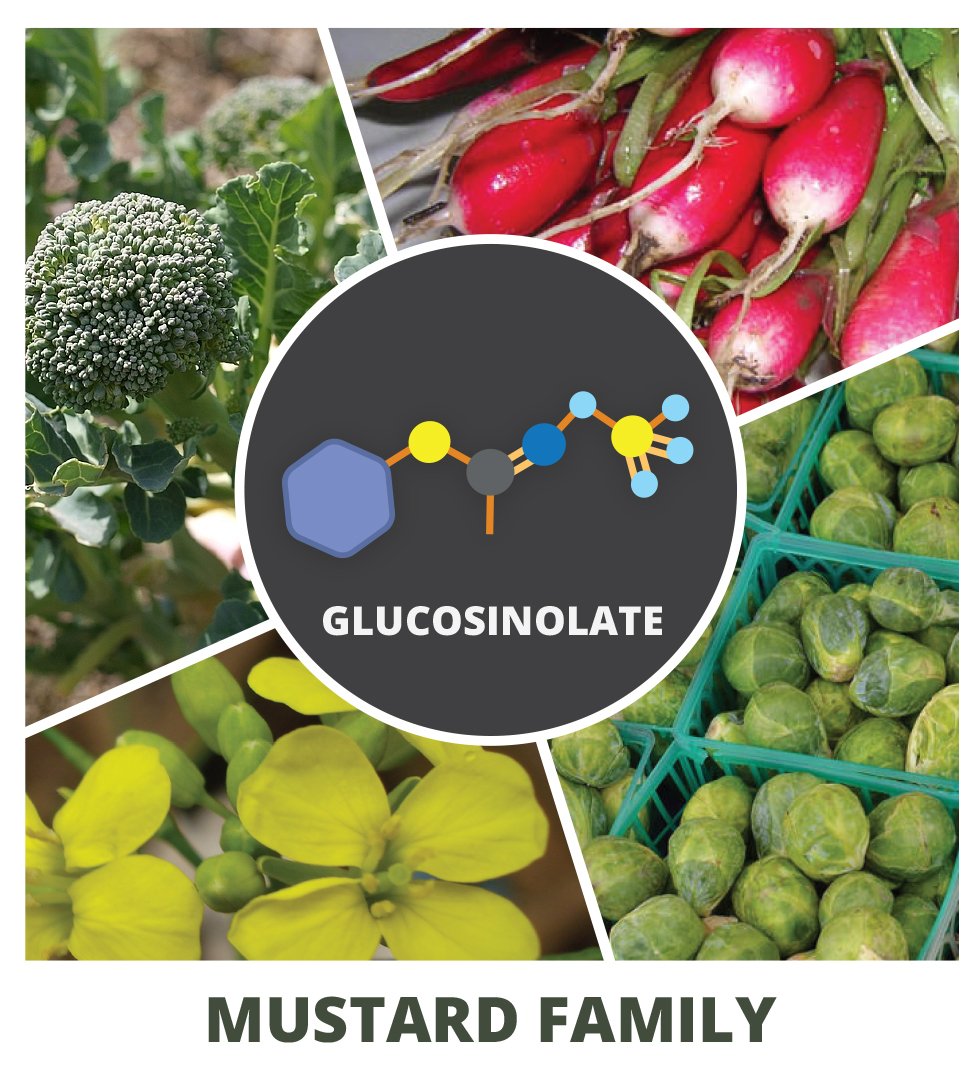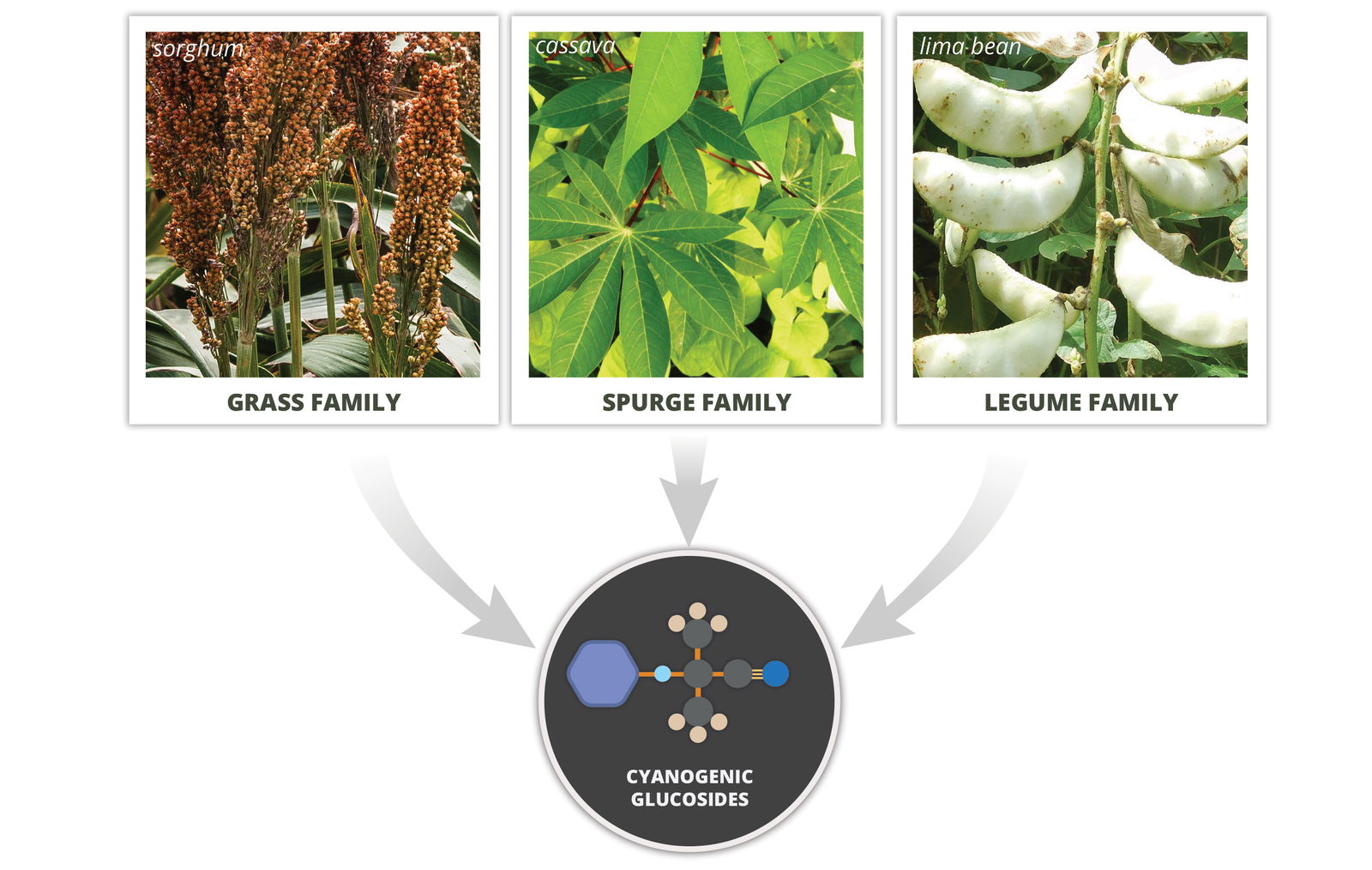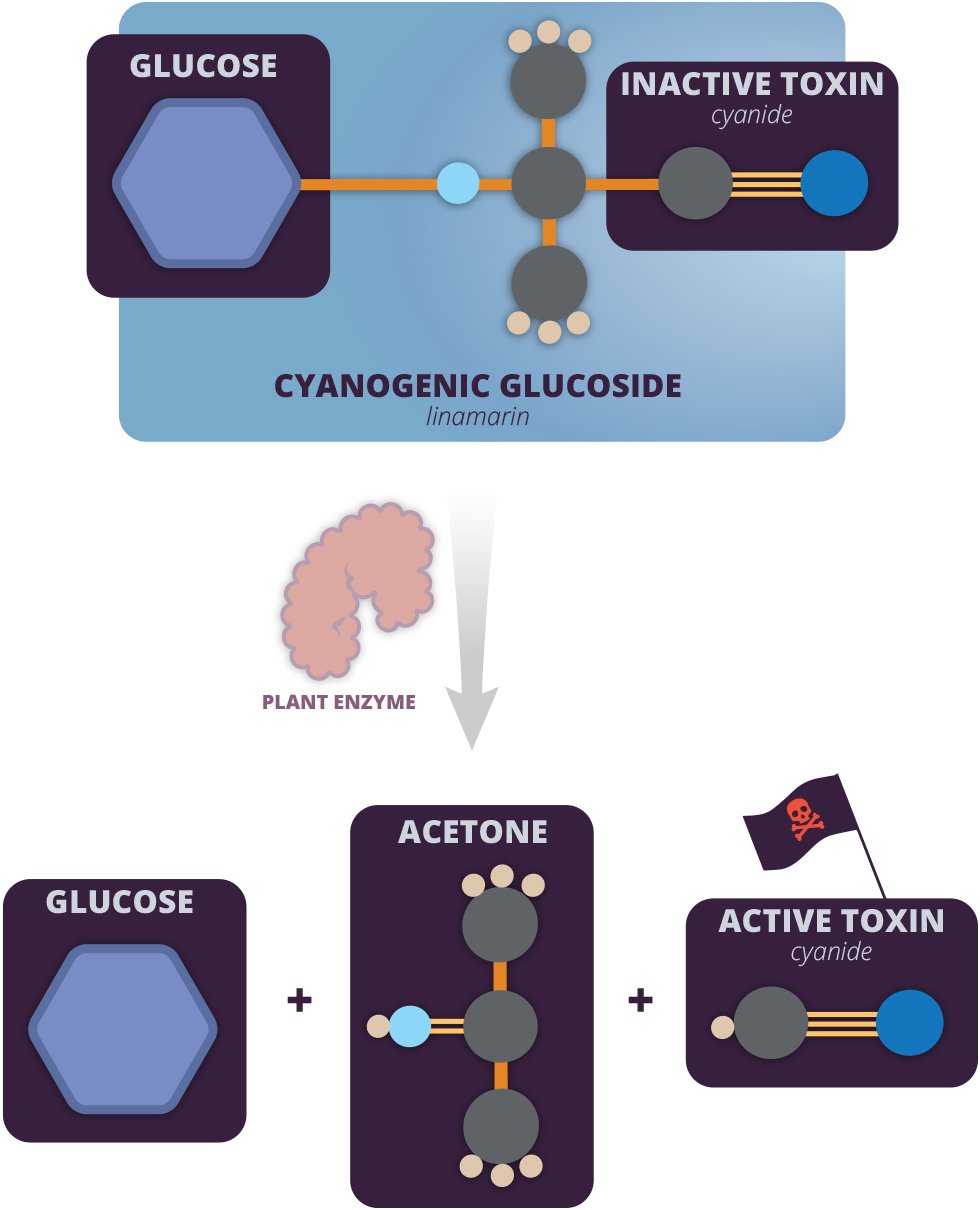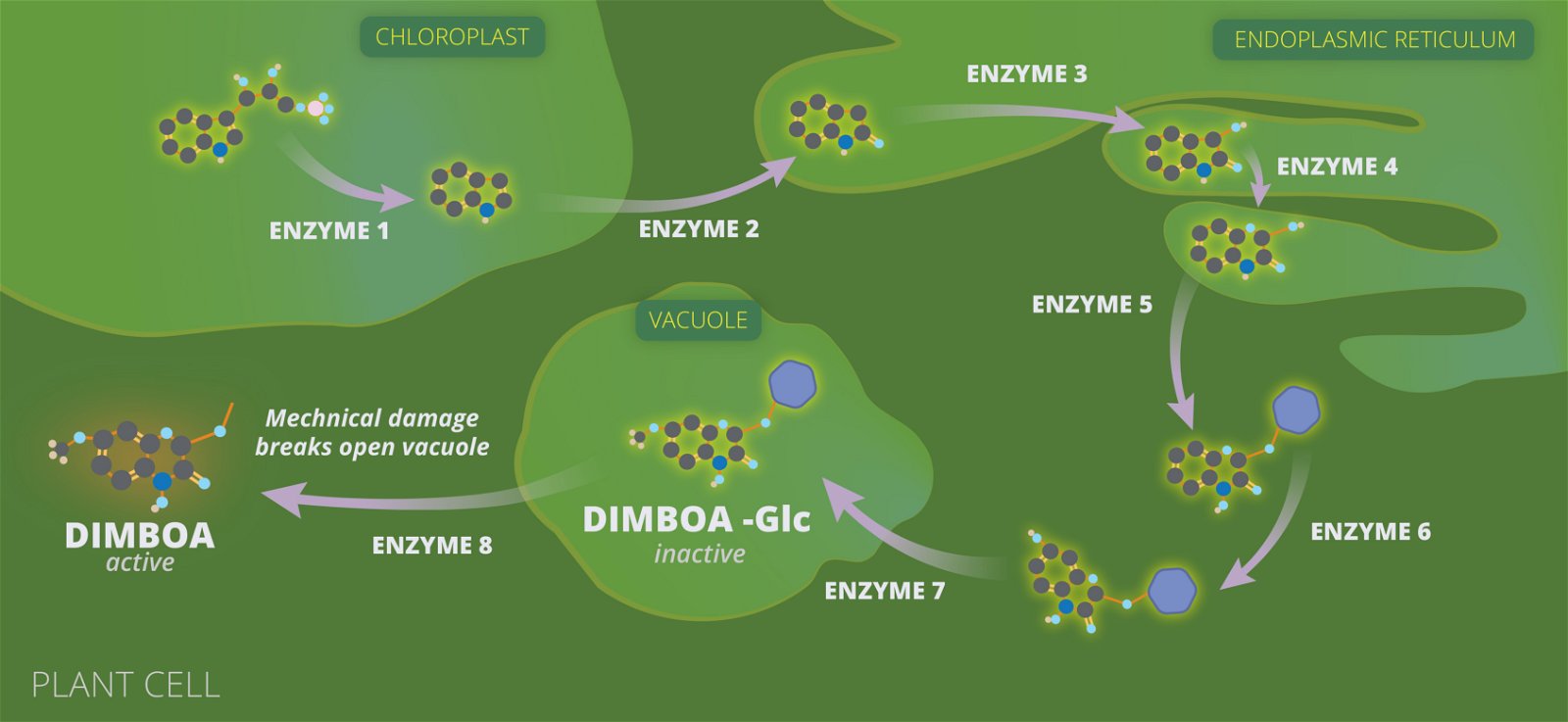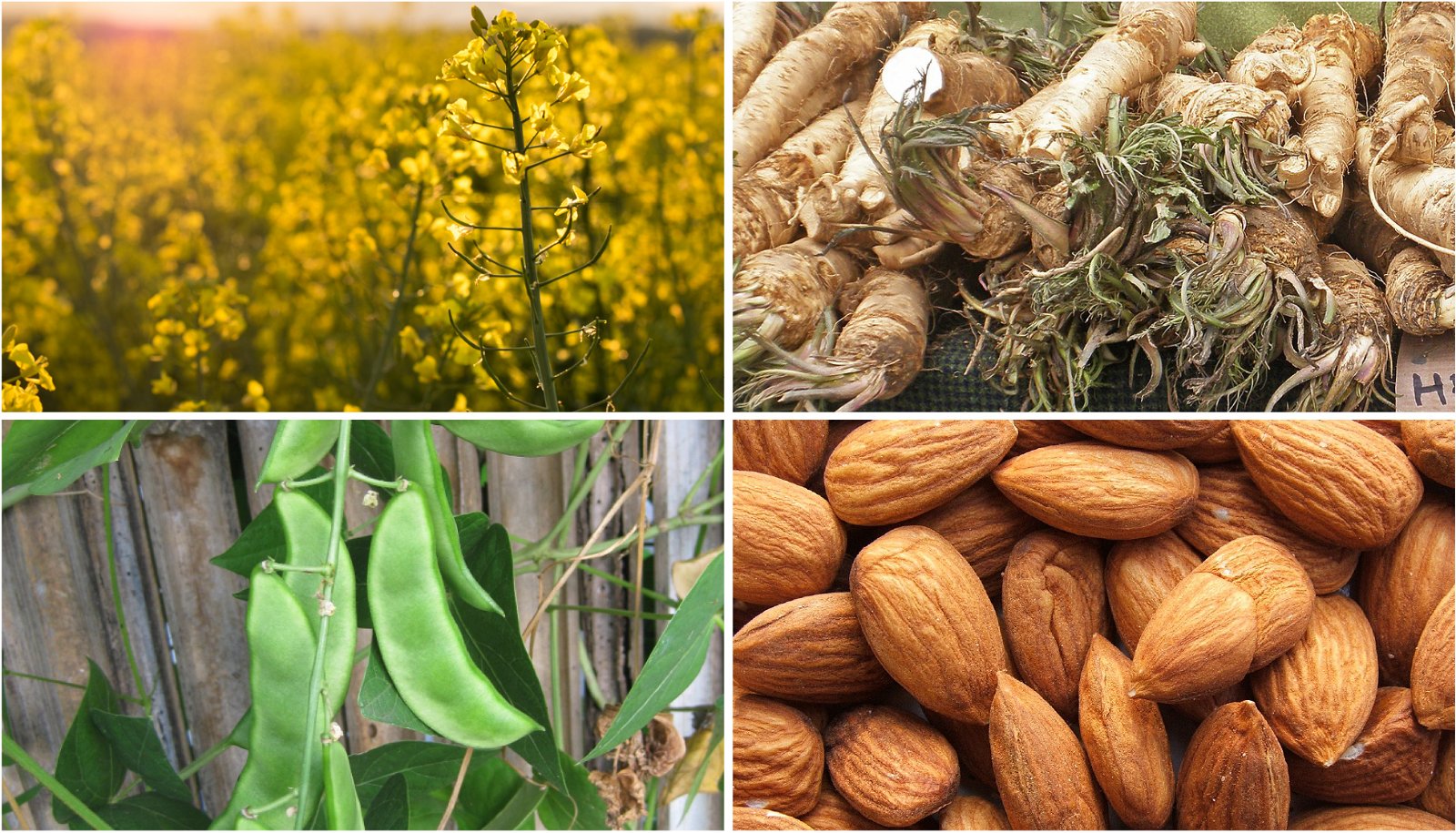Plants produce a staggering array of small molecules that they use in their wars with the insects, or other animals like mites or vertebrates, that try to eat them. In some cases, these toxic molecules disrupt the nervous system of animals. Or, they may interfere with basic cellular and biochemical functions needed for life. Some plants produce proteins that make it harder for insects to get essential nutrients from the plant tissues they consume. Some may slow growth and development in the insect, reducing plant damage.
This page describes how plants produce, store, and use the toxic molecules and proteins that ward off insects and other herbivores.
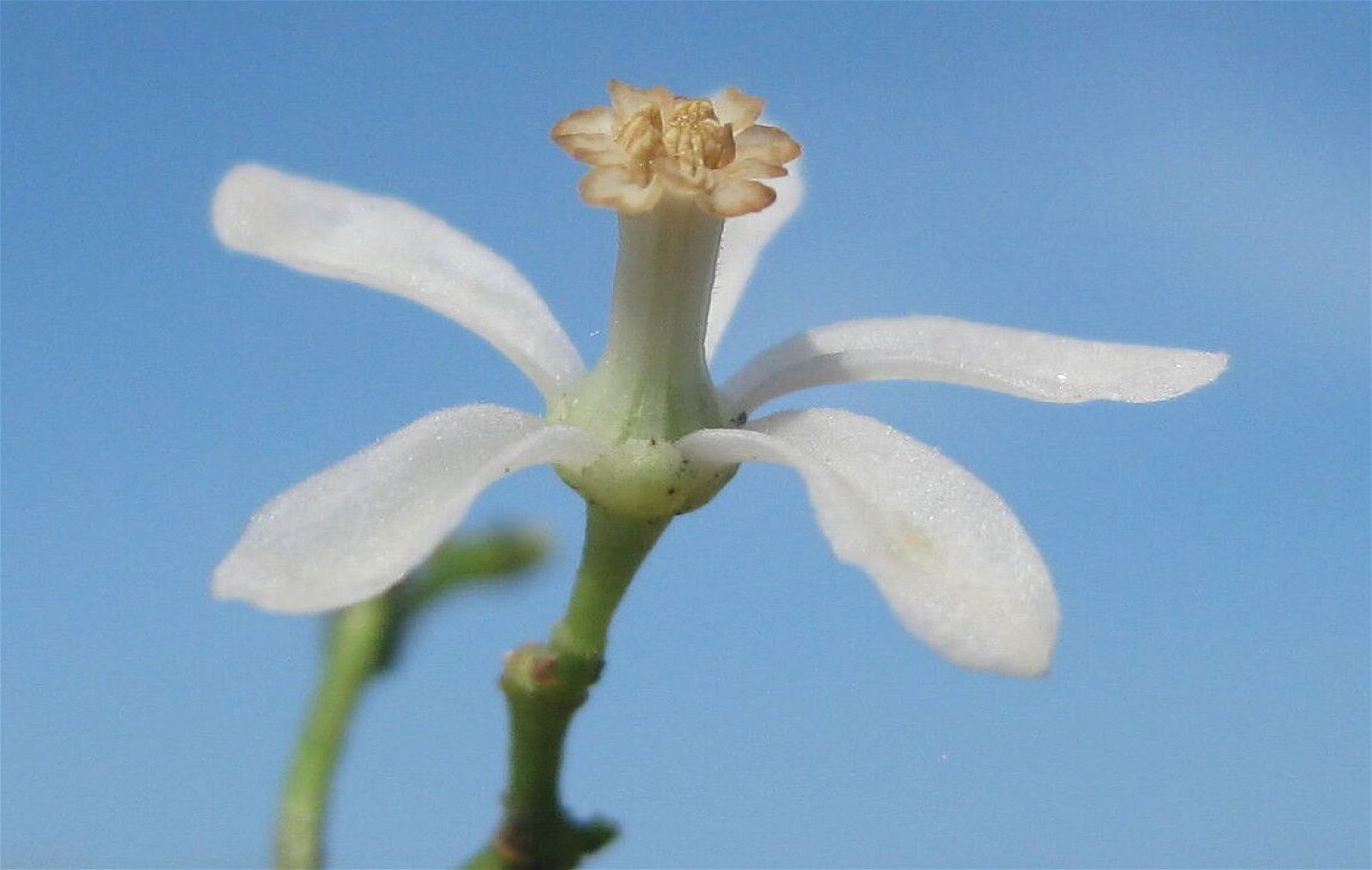
Flower of the Indian neem tree. Neem oil is an important environmentally-friendly pesticide. Many toxic compounds in this plant dramatically disrupt insect growth causing early death.
